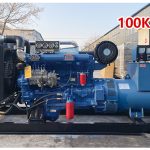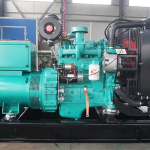Transformers are electrical devices that transfer electrical energy between two or more circuits through electromagnetic induction. Essentially, they adjust voltage levels, allowing for efficient energy transmission over long distances. In power stations, transformers are crucial for stepping up voltage to minimize losses during transmission.
T͜͜͡͡r͜͜͡͡a͜͜͡͡n͜͜͡͡s͜͜͡͡f͜͜͡͡o͜͜͡͡r͜͜͡͡m͜͜͡͡e͜͜͡͡r͜͡ ͜͡F͜͜͡͡u͜͜͡͡n͜͜͡͡c͜͜͡͡t͜͜͡͡i͜͜͡͡o͜͜͡͡n͜͜͡͡s͜͡ ͜͡i͜͜͡͡n͜͡ ͜͡P͜͜͡͡o͜͜͡͡w͜͜͡͡e͜͜͡͡r͜͡ ͜͡S͜͜͡͡t͜͜͡͡a͜͜͡͡t͜͜͡͡i͜͜͡͡o͜͜͡͡n͜͜͡͡s͜͡
Transformers serve several essential functions in power stations, which include:
Voltage Regulation: Maintaining consistent voltage levels is crucial for reliable electricity supply. Transformers help manage voltage fluctuations and ensure stability across the power grid.
Power Distribution: Transformers enable the efficient distribution of electricity from generation sites to consumers. By adjusting voltage levels, they facilitate the safe delivery of power to end-users.
Load Balancing: In multi-phase systems, transformers assist in balancing loads across different phases. This function is vital for preventing overloading and ensuring the longevity of electrical equipment.
͜͡I͜͜͡͡n͜͡ ͜͡p͜͜͡͡o͜͜͡͡w͜͜͡͡e͜͜͡͡r͜͡ ͜͡s͜͜͡͡t͜͜͡͡a͜͜͡͡t͜͜͡͡i͜͜͡͡o͜͜͡͡n͜͜͡͡s͜͡, ͜͡t͜͜͡͡h͜͜͡͡e͜͡ ͜͡f͜͜͡͡o͜͜͡͡l͜͜͡͡l͜͜͡͡o͜͜͡͡w͜͜͡͡i͜͜͡͡n͜͜͡͡g͜͡ ͜͡t͜͜͡͡y͜͜͡͡p͜͜͡͡e͜͜͡͡s͜͡ ͜͡o͜͜͡͡f͜͡ ͜͡t͜͜͡͡r͜͜͡͡a͜͜͡͡n͜͜͡͡s͜͜͡͡f͜͜͡͡o͜͜͡͡r͜͜͡͡m͜͜͡͡e͜͜͡͡r͜͜͡͡s͜͡ ͜͡a͜͜͡͡r͜͜͡͡e͜͡ ͜͡c͜͜͡͡o͜͜͡͡m͜͜͡͡m͜͜͡͡o͜͜͡͡n͜͜͡͡l͜͜͡͡y͜͡ ͜͡u͜͜͡͡s͜͜͡͡e͜͜͡͡d͜͡ / ͜͡T͜͜͡͡y͜͜͡͡p͜͜͡͡e͜͜͡͡s͜͡ ͜͡o͜͜͡͡f͜͡ ͜͡T͜͜͡͡r͜͜͡͡a͜͜͡͡n͜͜͡͡s͜͜͡͡f͜͜͡͡o͜͜͡͡r͜͜͡͡m͜͜͡͡e͜͜͡͡r͜͜͡͡s͜͡ ͜͡i͜͜͡͡n͜͡ ͜͡P͜͜͡͡o͜͜͡͡w͜͜͡͡e͜͜͡͡r͜͡ ͜͡S͜͜͡͡t͜͜͡͡a͜͜͡͡t͜͜͡͡i͜͜͡͡o͜͜͡͡n͜͜͡͡s͜͡
Step-Up Transformers
Step-up transformers are used to increase voltage levels from generators before the electricity is transmitted through power lines. This type of transformer typically has more turns on the secondary winding than on the primary winding. Consequently, it converts low-voltage electricity generated by turbines into high-voltage electricity suitable for long-distance transmission.
Step-Down Transformers
In contrast, step-down transformers decrease voltage levels before the electricity is distributed to homes and businesses. After electricity travels through high-voltage transmission lines, it reaches substations where step-down transformers reduce the voltage to safer levels. This ensures that electricity can be utilized effectively without posing a risk to end-users.
Auto-Transformers
Auto-transformers offer a different design compared to traditional transformers. They use a single winding that serves as both the primary and secondary winding, which can be advantageous for certain applications. In power stations, auto-transformers are often employed for voltage regulation, particularly in systems requiring high efficiency and lower costs. These transformers are beneficial in scenarios where the voltage levels do not need to be drastically altered.
Isolation Transformers
Isolation transformers provide electrical isolation between two circuits, which is essential for safety and equipment protection. In power stations, these transformers help mitigate the risk of electrical shock and protect sensitive equipment from voltage spikes. By isolating the power source, they create a safer operating environment for personnel and equipment alike.
Three-Phase Transformers
Most power stations utilize three-phase transformers due to the advantages they offer for industrial applications. These transformers are designed to handle three-phase power, which is commonly used in electrical grids. By efficiently distributing power, three-phase transformers enhance the overall performance of power stations.
͜͡S͜͜͡͡e͜͜͡͡l͜͜͡͡e͜͜͡͡c͜͜͡͡t͜͜͡͡i͜͜͡͡n͜͜͡͡g͜͡ ͜͡T͜͜͡͡r͜͜͡͡a͜͜͡͡n͜͜͡͡s͜͜͡͡f͜͜͡͡o͜͜͡͡r͜͜͡͡m͜͜͡͡e͜͜͡͡r͜͜͡͡s͜͡ ͜͡K͜͜͡͡e͜͜͡͡y͜͡ ͜͡C͜͜͡͡o͜͜͡͡n͜͜͡͡s͜͜͡͡i͜͜͡͡d͜͜͡͡e͜͜͡͡r͜͜͡͡a͜͜͡͡t͜͜͡͡i͜͜͡͡o͜͜͡͡n͜͜͡͡s͜͡ ͜͡P͜͜͡͡o͜͜͡͡i͜͜͡͡n͜͜͡͡t͜͜͡͡s͜͡
When selecting transformers for power stations, several factors need to be taken into account:
Capacity and Rating: The transformer’s capacity should match the expected load to avoid inefficiencies or potential damage. Proper rating ensures that the transformer can handle the maximum power demand.
Cooling Mechanism: Transformers generate heat during operation. Therefore, an effective cooling mechanism, such as oil cooling or air cooling, is essential for maintaining performance and longevity.
Efficiency: High-efficiency transformers minimize energy losses, which is particularly important for large-scale power stations. Selecting transformers with low no-load losses and low load losses contributes to overall operational efficiency.
Maintenance Requirements: Some transformers require more maintenance than others. Understanding the maintenance needs can help in managing costs and ensuring reliable operation.

In summary, the choice of transformer affects not only the efficiency of power stations but also the overall reliability of the electrical grid. By selecting the appropriate type and ensuring optimal maintenance, power stations can meet the ever-growing demand for electricity while maintaining safety and efficiency.










